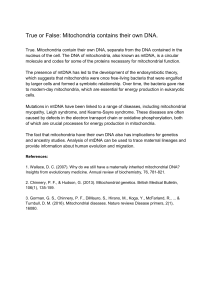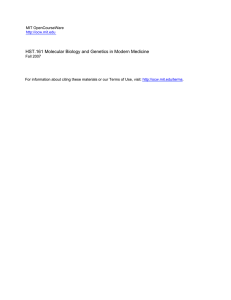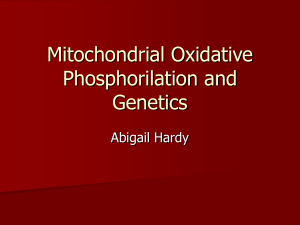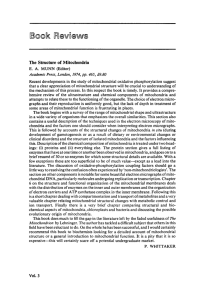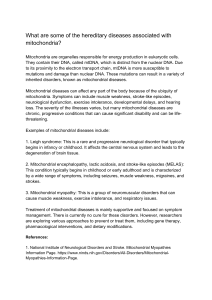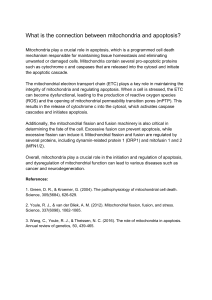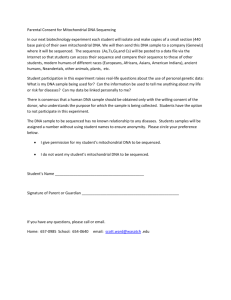9284-Mitochondrial donation
advertisement
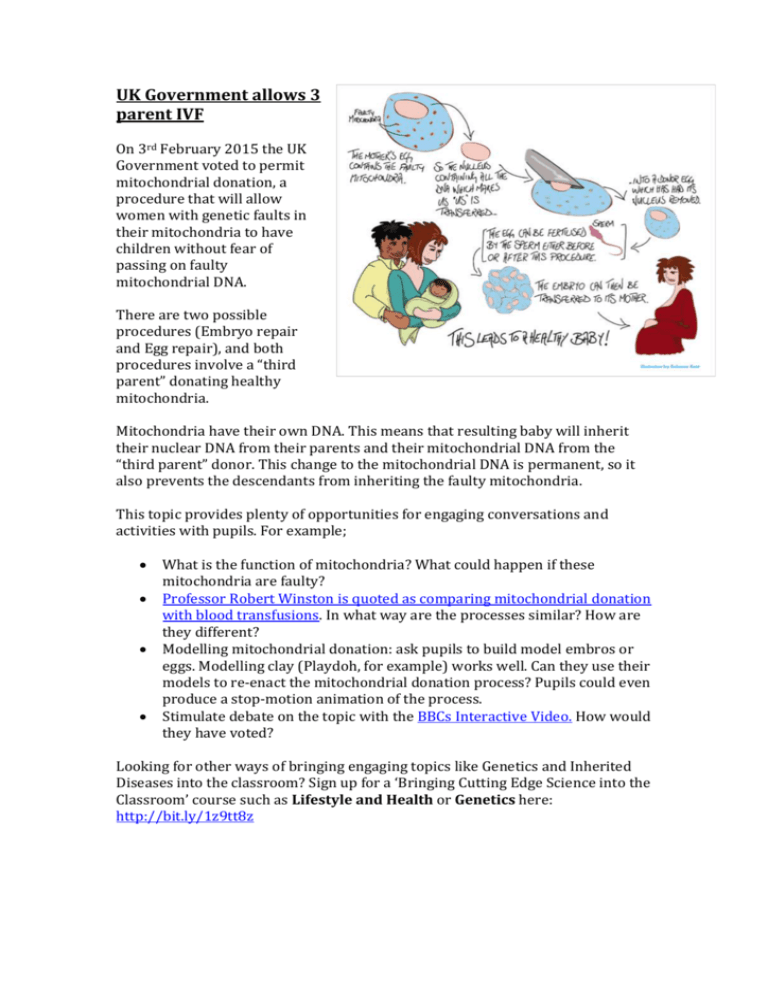
UK Government allows 3 parent IVF On 3rd February 2015 the UK Government voted to permit mitochondrial donation, a procedure that will allow women with genetic faults in their mitochondria to have children without fear of passing on faulty mitochondrial DNA. There are two possible procedures (Embryo repair and Egg repair), and both procedures involve a “third parent” donating healthy mitochondria. Mitochondria have their own DNA. This means that resulting baby will inherit their nuclear DNA from their parents and their mitochondrial DNA from the “third parent” donor. This change to the mitochondrial DNA is permanent, so it also prevents the descendants from inheriting the faulty mitochondria. This topic provides plenty of opportunities for engaging conversations and activities with pupils. For example; What is the function of mitochondria? What could happen if these mitochondria are faulty? Professor Robert Winston is quoted as comparing mitochondrial donation with blood transfusions. In what way are the processes similar? How are they different? Modelling mitochondrial donation: ask pupils to build model embros or eggs. Modelling clay (Playdoh, for example) works well. Can they use their models to re-enact the mitochondrial donation process? Pupils could even produce a stop-motion animation of the process. Stimulate debate on the topic with the BBCs Interactive Video. How would they have voted? Looking for other ways of bringing engaging topics like Genetics and Inherited Diseases into the classroom? Sign up for a ‘Bringing Cutting Edge Science into the Classroom’ course such as Lifestyle and Health or Genetics here: http://bit.ly/1z9tt8z

